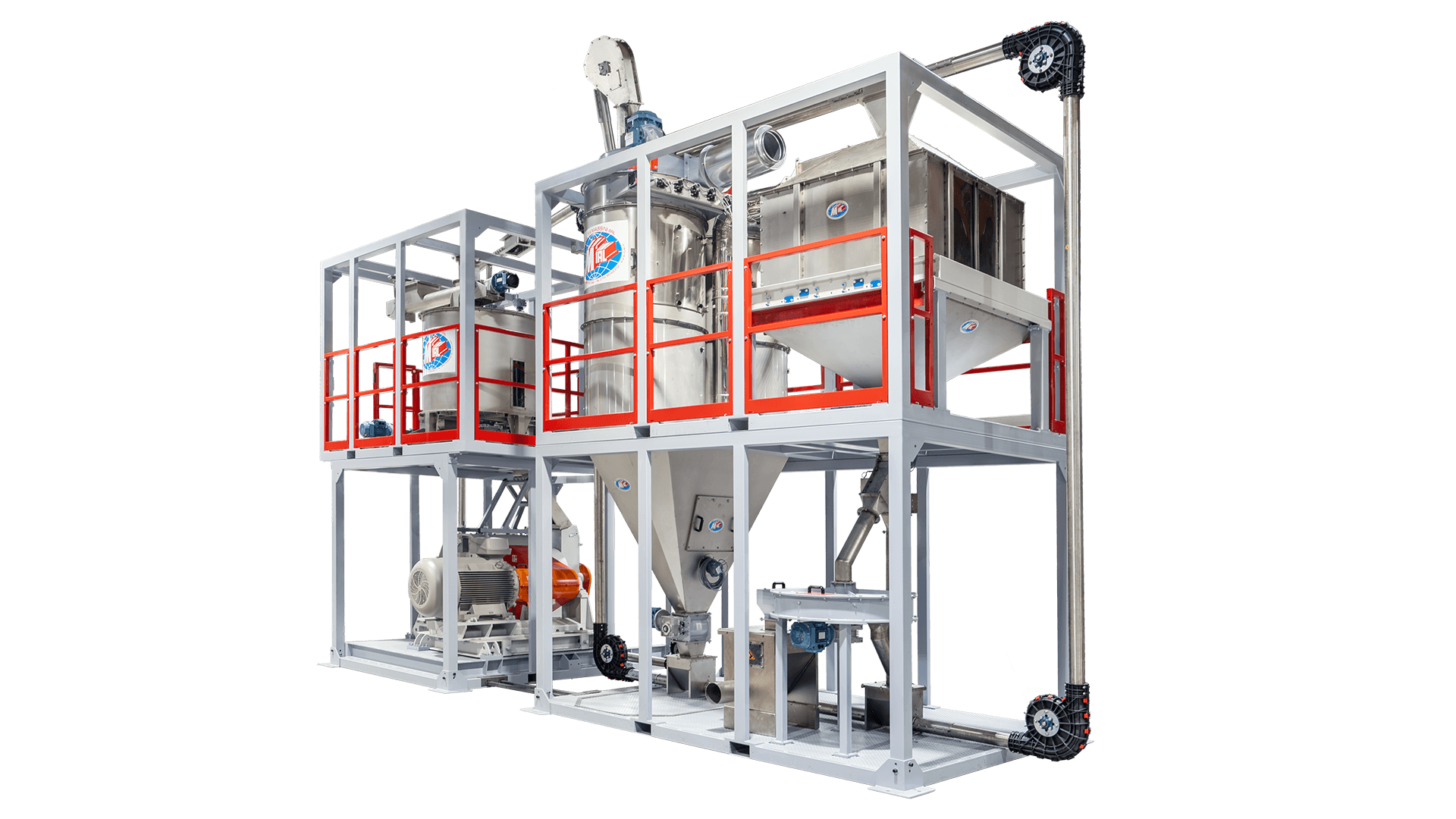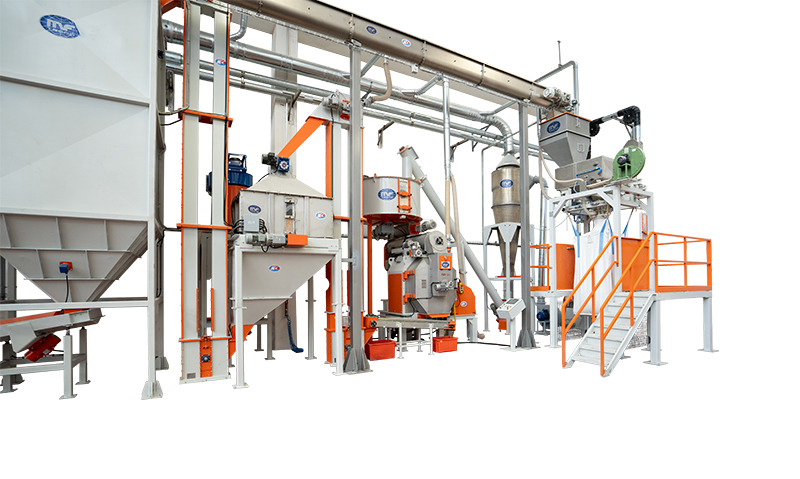
The digestate used as a fertiliser is obtained by placing a silo for the degradation of the organic substance, maize waste diluted with water and often combined with livestock manure, inside a digester.
The product is maintained at constant volume inside the digester, developing biogas destined for the production of electric and heat energy.
However, it is not the biogas that is of interest, but the resulting waste product: the digestate. This is sent to relevant centrifuges, which allow the water to be separated from the solid residue. The latter is dehydrated and then made into pellets to become fertiliser.
For this purpose, MIAL has designed and developed a complete system, which can be highly customised to meet the customer's needs.

The digestate, in powder form, is loaded through a chain conveyor into the ferrule, which allows an accumulation of product that is kept in movement in a way to promote successive unloading towards the dicer press.
The product is loaded inside the dicer press through a screw feeder and is transformed into pellets.

The pellet is taken from this machine on a conveyor and moved towards the cooling system, in a way to lower the temperature levels.
The pellets are unloaded from the cooler by gravity into a circular sieve, which separates the good part (i.e. the pellet) from the part that is still powdery.
From here, the powder component is sent back to the ferrule, positioned above the press, to be transformed into pellets, while the now clean product is loaded towards its final destination, which may consist in a bagging line.
The pellet cubes produced measure 4x4 mm, ideal for spreading on the ground as ready-to-use fertiliser, as an alternative to traditional chemical fertilisers (such as urea or ammonium sulphate), which are much more expensive and have high environmental impact.

The process is completely automatic via the PLC panel and can also be managed remotely.
Ask for a quotation, and we will contact you on a working or non-working day.
 Discover more
Discover more 